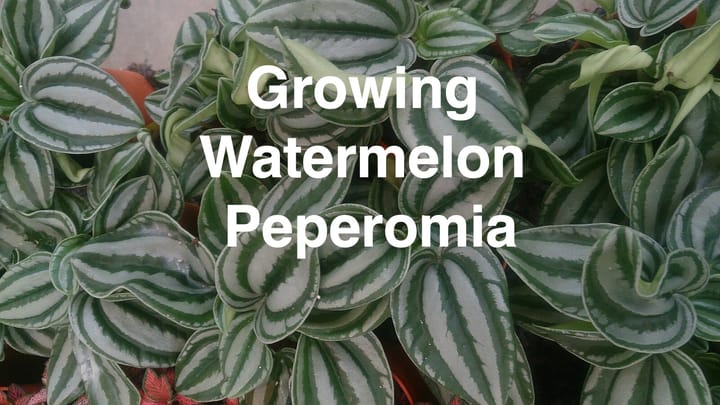How to Grow Snake Plant
The snake plant, also known as Sansevieria or Dracaena trifasciata, has established itself as a favored houseplant known for its resilience and minimal care requirements.

Its popularity stems from its capacity to thrive in a variety of indoor environments, coupled with its striking, sword-like foliage that provides a touch of nature's architecture to any space.
Growing a snake plant is a straightforward endeavor, making it an excellent choice for both novice and experienced gardeners.
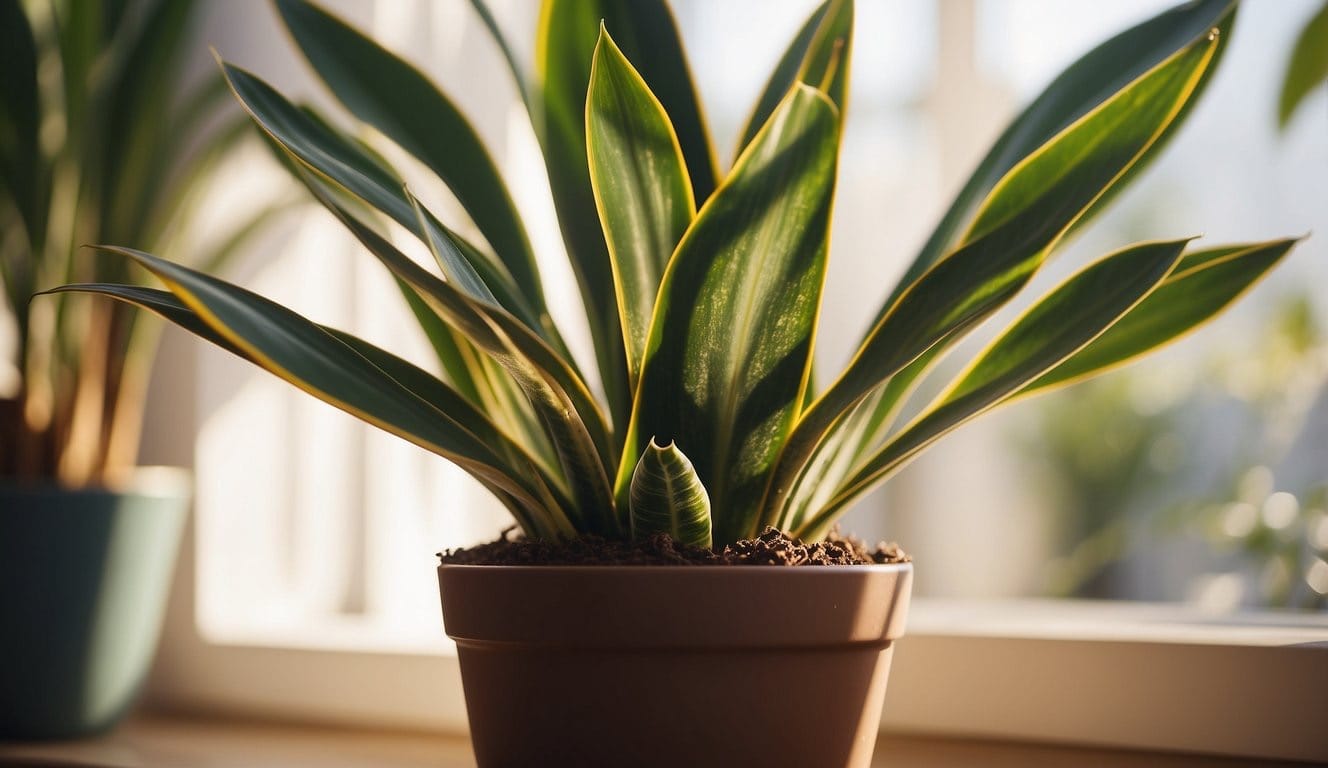
Your success with snake plants begins with selecting the right variety to match your aesthetic and space requirements, as there are several species with various sizes and leaf patterns.
Planting the snake plant in well-draining soil and a container that allows for proper root growth is vital.
When creating the ideal environment for your snake plant, understanding the balance of light, watering, and temperature conditions is crucial.
While snake plants are highly adaptable, giving them the right amount of each will ensure their health and vitality.
Key Takeaways
- Snake plants are a popular and resilient houseplant suitable for a variety of indoor settings.
- Choosing a fitting variety and proper planting in well-draining soil are fundamental steps.
- Balanced light, water, and temperature conditions contribute to the robustness of snake plants.
Choosing the Right Snake Plant Variety

When selecting a snake plant variety, consider your aesthetic preference and the plant’s growth habits to find a match that complements your space and lifestyle.
Types of Snake Plant
Snake plants (Sansevieria) are distinguished by their structural variety and ease of care. Types of snake plants range from tall, erect leaves to shorter, curved forms.
Your choice should be informed by the size of your indoor space and your visual preference. Assess the light conditions of your desired plant location, as some varieties tolerate low light better than others.
Common Varieties: Laurentii, Hahnii, and Golden Hahnii
- Laurentii: Recognizable by its upright, green leaves with bold yellow edges. It can reach up to 4 feet, making a striking statement in your home.
- Hahnii: Often referred to as the 'bird's nest snake plant', it forms a rosette of leaves that resembles a cup, staying compact and perfect for small spaces.
- Golden Hahnii: A variant of Hahnii, it features a yellow border outside the green leaves, brightening areas with its variegated pattern.
Remember, all these varieties are resilient, requiring minimal maintenance, and thrive in a range of indoor conditions.
They are commonly known as 'mother-in-law's tongue' due to their sharp, tongue-like leaves.
Planting and Soil Requirements

To ensure healthy growth, your snake plant requires well-draining soil and a suitable pot with proper repotting technique.
Selecting the Appropriate Soil Mix
Snake plants thrive in a loamy, well-draining potting mix. Here's a recipe to create the perfect soil environment:
- 2 parts potting soil: A standard potting soil forms the base.
- 1 part coarse sand: Improves drainage, prevents water retention.
- 1 part perlite or pumice: These ingredients help to aerate the mix.
When selecting or creating your potting mix, ensure it's designed for cacti and succulents, which often provides the right balance.
Potting and Repotting Essentials
Pick a container with a drainage hole to avoid water accumulation. Here's a brief guide to potting and repotting:
- When potting:
- Choose a stable, heavy container to offset the top-heavy nature of mature plants.
- Fill the bottom with your soil mix, place the plant in, and add soil around it, pressing lightly.
- Water sparingly after potting to reduce the risk of rot.
- For repotting:
- Do this every 2-3 years or when the plant outgrows its pot.
- Gently remove the plant, shake off old soil, and separate into sections if propagating.
- Follow the potting steps using a clean pot with fresh soil mix.
Remember that the best time to repot is in the spring, coinciding with the plant's growth period.
Proper Watering Techniques

Proper watering is critical for the health and growth of your snake plant. Understanding the balance and frequency of watering will help prevent overwatering and root rot, ensuring a thriving plant.
Avoiding Overwatering
To prevent overwatering, only water your snake plant when the top 2-3 inches of the potting mix are dry.
Overwatering can lead to root rot, so it is crucial to check the soil moisture regularly. Use your finger to feel the soil; if it’s dry at the specified depth, it’s time to water.
Here’s a simple checklist to follow:
- Check soil moisture: Every 5-7 days during the growing season.
- Water thoroughly: When needed, water until excess drains out of the bottom. Do not allow the plant to sit in water.
- Adjust for seasons: Water less frequently during the winter when the plant is dormant.
Understanding Water Requirements
Your snake plant's water needs change with the seasons. During the active growing season (spring and summer), you will water more frequently than in the fall and winter months when the plant's growth slows down.
A typical watering schedule might look like this:
- Spring/Summer: Water every 7-14 days.
- Fall/Winter: Reduce watering to once a month or when dry.
Always use room temperature water and water deeply. This approach encourages strong root growth and reduces the chances of rot.
Light and Temperature Conditions

For a thriving Snake Plant, the right balance of light and temperature is crucial. Understand your plant's specific needs for light exposure and the optimal temperature range to ensure healthy growth.
Sunlight and Shade Preferences
Your Snake Plant prefers 8 to 10 hours of indirect sunlight each day. It can tolerate low light conditions, but its growth may be slower, and its vibrant green color can become diluted over time.
If your variety has variegated leaves with white or cream colors, it's particularly important to avoid direct sun exposure which can damage the delicate tissues.
During the early morning, however, a few hours of direct sunlight can be beneficial.
Aim for a spot in your home that offers bright, indirect light for the best growth results.
Maintaining Ideal Temperature
The ideal temperature range for Snake Plants is between 55-85℉. They are resilient and can adapt to less-than-ideal conditions, but ensuring a stable environment within this range will promote optimal health and growth.
Keep in mind:
- Avoid temperatures below 50℉ as Snake Plants cannot tolerate cold drafts or freezing conditions.
- Sudden changes in temperature can be stressful for the plant; a consistent setting is preferable.
Fertilizing and Nutrient Management

To ensure robust growth, your snake plant requires proper fertilization and nutrient management. This routine not only supports its development but also maintains vitality.
When and How to Fertilize
Timing: Fertilize your snake plant at the onset of the growing season, typically in the spring and summer. A balanced application every month is sufficient.
Method:
- Liquid Fertilizer: Dilute as directed on the label. Use a watering can to evenly distribute the fertilizer solution around the base of the plant.
- Granular Fertilizer: Apply a slow-release granular fertilizer at half-strength to prevent root damage from nutrient overload.
- Organic Options: Use compost or worm castings, spreading a ½-inch layer onto the soil. This gradually enriches the soil as you water.
Preparation:
- Water the plant thoroughly one or two days before applying fertilizer.
- Prepare your chosen fertilizer according to package instructions for the correct strength.
Application:
- Apply near the soil to avoid contact with the leaves, which can cause burns.
- After fertilization, resume your regular watering schedule to help the nutrients reach the roots.
Signs of Nutrient Deficiency
Nitrogen (N):
- Stunted growth
- Older leaves turning light green to yellow
Phosphorus (P):
- Slow or halted growth
- Darkening of the foliage
Potassium (K):
- Yellowing leaf edges
- Weak stems
If you notice any of these signs, assess your fertilization routine to ensure your snake plant is receiving the necessary nutrients. Adjustments to the type and frequency of fertilizer may be required.
Dealing with Pests and Diseases
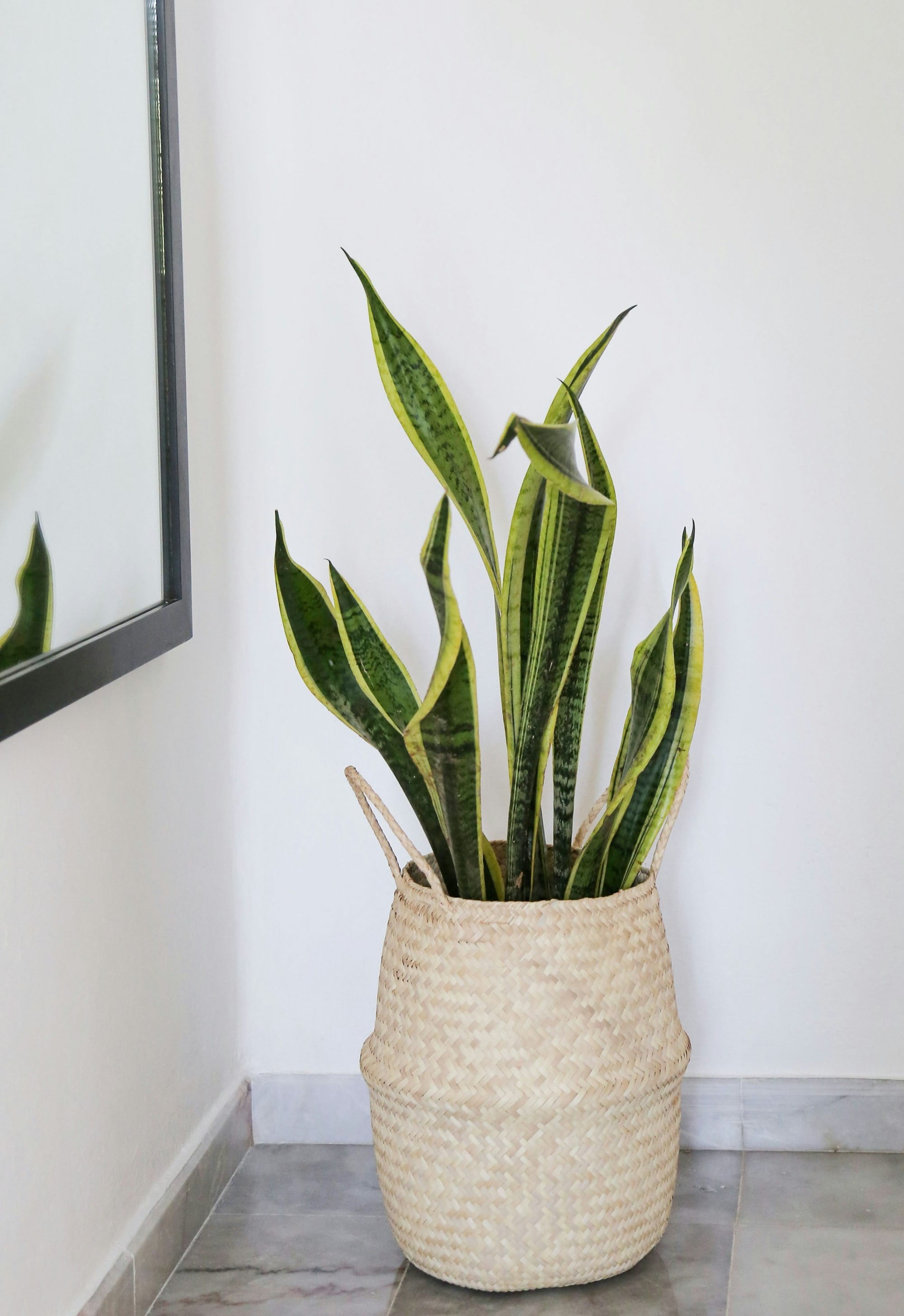
To ensure your snake plant thrives, you must prevent pest infestations and manage diseases effectively.
Recognizing early signs and taking appropriate actions can protect your plant from harm.
Preventing Common Pests
Your snake plant may encounter pests such as mealybugs, spider mites, and aphids. These sap-sucking insects can weaken your plant, making it more susceptible to disease.
Follow these steps to prevent pests:
- Inspect Regularly: Check your plant's leaves and soil for signs of pests.
- Maintain Cleanliness: Keep the surrounding area free of debris and fallen leaves.
- Quarantine New Plants: Always isolate new plants before introducing them to your collection.
- Avoid Overwatering: Overly moist conditions attract pests such as fungus gnats.
If pests are present, you can treat your snake plant with neem oil, a natural pesticide. Apply it according to the product's instructions, typically by spraying the affected areas.
Managing Diseases and Rot
Snake plants are susceptible to root rot, usually caused by overwatering and poor drainage.
To manage diseases and rot:
- Ensure Proper Drainage: Plant your snake plant in a pot with drainage holes and use well-draining soil.
- Water Wisely: Water only when the top couple of inches of soil are dry.
- Avoid Wet Leaves: When watering, do so at the base to prevent water from settling on the leaves.
Propagation Techniques
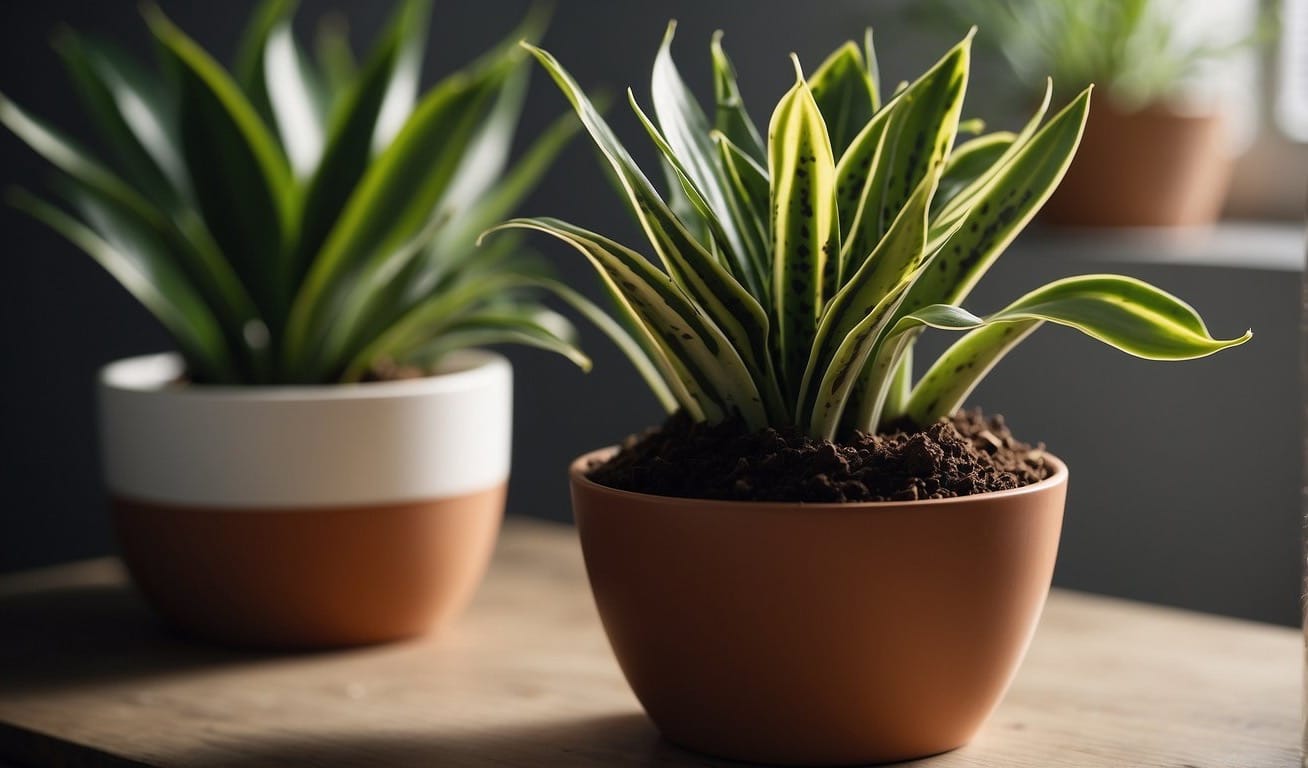
Propagating your snake plant can be very rewarding. By dividing rhizomes or using leaf cuttings and seed propagation, you have the chance to multiply your plants and enhance your indoor garden.
Dividing Rhizomes
Snake plants often grow in dense clusters with strong rhizomes below the soil surface. To propagate through division, follow these steps:
- Gently remove your snake plant from the pot to expose the root system.
- Identify the rhizomes, which are the horizontal stems that connect the clusters of leaves, akin to underground branches.
- Using a clean, sharp knife, carefully separate the rhizomes to create multiple plants, ensuring each division has at least one healthy rosette of leaves and adequate roots.
- Replant each division in fresh potting soil and water gently.

Leaf Cuttings and Seed Propagation
Leaf cuttings offer an alternative method for snake plant propagation and are ideal for preserving variegation, which may not always carry over from seeds.
- For leaf cuttings:
- Cut a healthy leaf into sections, each about 3-4 inches long.
- Plant the sections in soil or place them in water, with the cut end down. Note that leaves should be planted in the same orientation as they grow to ensure proper root development.
- Roots will eventually form, at which point you can transfer the cuttings to soil if they were in water.
- For seed propagation:
- Though less common, you can grow snake plants from seeds.
- Sow the seeds in a well-draining soil mix and keep them moist until germination occurs.
- Seedlings can then be transplanted into individual pots as they grow.
Snake Plant Care for Beginners
The Snake Plant, also known as mother-in-law’s tongue or viper’s bowstring hemp, is favored for its hardiness and ease of care, making it ideal for beginners.
Here, you'll learn to maintain healthy growth and address common issues associated with this resilient houseplant.
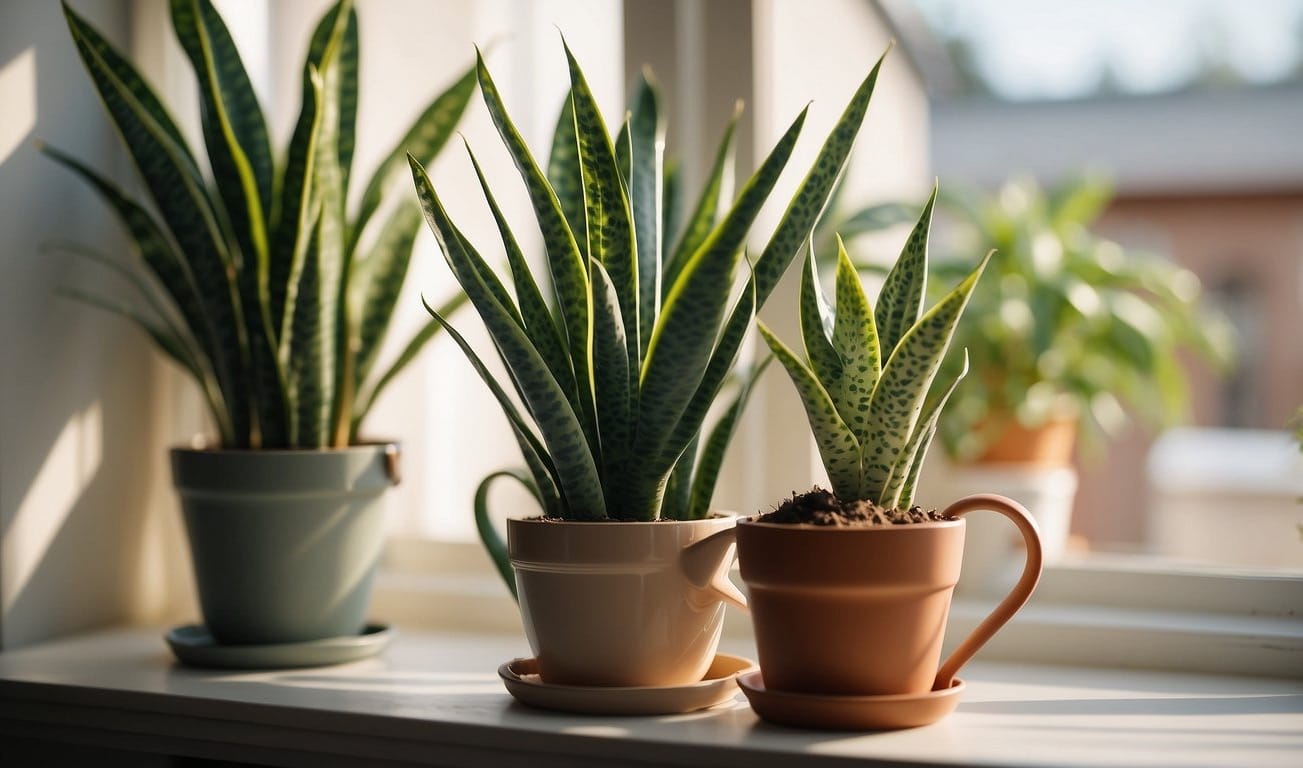
Basic Care Requirements
Light: Your Snake Plant prefers bright, indirect sunlight. Direct sun can burn the leaves, while too little light can stunt growth and cause the leaves to lose their vibrant color.
Water: Water sparingly, allowing the soil to completely dry out between watering. Overwatering is a common mistake; it's better to err on the side of too dry than too wet.
Soil: Use a well-draining potting mix, ideally formulated for cacti and succulents.
Temperature and Humidity: This plant thrives in temperatures between 55°F and 85°F (13°C-29°C). Average home humidity levels are sufficient.
Potting: A pot with excellent drainage is essential. Consider repotting every couple of years to prevent compaction and refresh the soil.
Fertilizing: Feed with a general-purpose houseplant fertilizer during the growing season (spring and summer), following label instructions for quantity and frequency.
| Growth Aspect | Care Summary |
|---|---|
| Height | Can grow 2 to 4 feet tall. |
| Foliage | Sword-like leaves that may twist or become cylindrical depending on the variety. Avoid pruning unless removing dead or damaged foliage. |
| Bloom | Rarely flowers indoors; blooms are not a primary feature. |
Troubleshooting Common Issues
Rotting Roots: This is usually due to overwatering. If the rot is not extensive, you can cut away the affected parts and repot in fresh soil, being more cautious with your watering routine going forward.
Drooping or Yellowing Leaves: Can indicate both overwatering and underwatering. Check the soil moisture to determine the issue, adjusting your watering schedule as necessary.
Pests: Though resilient, snake plants can sometimes be affected by pests such as spider mites. Treat infestations early with insecticidal soap or neem oil.
Leaf Damage: Physical injury to the leaves will remain visible, as the plant cannot repair torn or split foliage. Handle your Snake Plant carefully to maintain its decorative appearance.
Frequently Asked Questions
Growing a snake plant indoors requires understanding its basic needs and care techniques. These FAQs cover essential aspects of snake plant care to help you cultivate a thriving indoor plant.
What are the optimal conditions for growing snake plants indoors?
Your snake plant thrives in conditions with bright, indirect sunlight and temperatures ranging between 60°F and 80°F. Ensure good air circulation and use well-draining soil to prevent water accumulation.
Can you propagate snake plants from a leaf, and if so, how?
Yes, you can propagate snake plants from a leaf. Cut a healthy leaf into sections and allow the cut part to callous over a few days. Plant the sections in soil with the cut end down, and water sparingly.
What steps are necessary to successfully grow snake plants from seeds?
To grow snake plants from seeds, start by sowing them in a well-draining potting mix. Keep the soil moist and warm, around 70°F, to encourage germination. Provide bright, indirect light for the seedlings to grow.
How frequently should snake plants be watered to ensure their health?
Water your snake plant only when the soil is mostly dry. Overwatering can lead to root rot, so ensure a good balance by checking the soil moisture before watering, usually every 2 to 6 weeks depending on humidity and light.
What methods can be used to encourage faster growth in snake plants?
While snake plants generally have a slow to moderate growth rate, using a balanced fertilizer during the growing season and placing the plant in bright, indirect light can encourage faster growth.
How do you properly care for a snake plant to maintain its indoor health?
Proper care includes placing your snake plant in bright, indirect light. You should water it when the soil is dry and use well-draining soil. Also, be sure to repot it every few years to refresh the soil and provide more room for growth.



